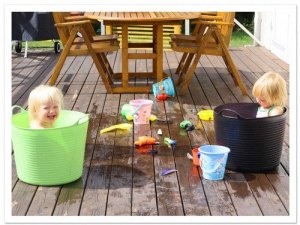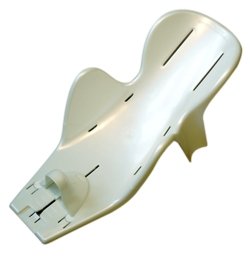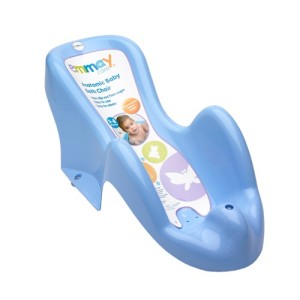Bathing can be a source of great anxiety for many parents. Babies and toddlers can be tricky to bathe, they are wriggly and slippery, sometimes angry and distressed. It can be particularly difficult if they cannot sit up on their own but they have outgrown their baby bath. Some children dislike the water and some want to play with their siblings but struggle due to being unable to sit independently.
I’ve met so many parents recently who need a bit of help to make bath time less hellish. There are literally hundreds of commercially available bathing solutions for babies, toddlers and young children, many of which can be used to help children with minor to moderate physical developmental difficulties. Not all equipment will be suitable for all children, so if in doubt please ask your child’s occupational therapist.
Tip: Always use a non slip bath mat when bathing your child.
REMEMBER: NEVER LEAVE YOUR CHILD UNATTENDED IN OR NEAR WATER REGARDLESS OF THE DEVICE THEY MAY BE USING.
The Garden Tub/ Trug
Approximately £5
Available from most homeware stores
This is one of my all time favourite child bathing solutions – we came by this after my shower-phobic toddler needed a bath on our camping holiday. Suitable for children with good head control who can sit independently but struggle to sit up in a regular bath tub. This can be used on a non slip bath mat in a wet room or inside a bath tub. Ensure there are no sharp or rough edges on the trug that your child could hurt themselves on.
Benefits: The child gets to splash and play with toys close by but feels more secure than in a regular bath tub. Available in many different colours.


There is also the Tummy Tub which is a baby bucket bath designed for babies 0-6 months. This very simple bucket design will set you back around £25 and is available from major nursery retailers and online outlets.

The Swivel Bath Seat/ Non Slip Bath Seat
Approximately £10
Available from shops such as Mothercare, Tesco Direct, Ebay, Online retailers
Suitable for children who have good head control and can sit independently but may need some help to sit in a conventional bath tub.
Benefits: Good for playing with siblings in the bath.
Drawbacks: It can be difficult to get wriggly legs through to sit the toddler/ baby. Toys can drift away from the child leading to frustration.

The Blooming Baby Bath Seat
Approximately £40
Available from Amazon
Suitable for babies who are not yet sitting up or who struggle coping with the hard texture of bath seats or tubs. Some parents use this bit of kit to bathe their child in a sink.
Drawbacks: Very expensive! Only suitable for small babies and toddlers

Penguin Type Bath Seats
Approximately £10 – £20
Available from nursery goods suppliers and online retailers
Suitable for babies or very small children with poor head control and who are not able to sit up on their own.
Benefits: The child gets to recline in the water and kick their legs. Can be used in a baby bath or regular bath tub. Siblings can enjoy being in the bath whilst this equipment is in use.
Drawbacks: Only suitable for small babies.


The Laundry Basket
Approximately £5
Widely available
This has appeared on many “parenting hacks” sites recently and although I can see the appeal of toys not floating away I think there might also be some significant drawbacks. Suitable for children with good head control who can sit independently. ** Ensure there are no sharp edges or that little toes can be caught in the holes **
An alternative to the laundry basket is a bath bath used inside a regular bath tub.
Benefits: Toys are kept close to the child. The child may feel more secure in the water.
If your child has more significant difficulties with controlling their body, holding their head up or sitting independently they may need a full occupational therapy assessment and specially prescribed equipment. You should always seek professional advice if your child has complex postural needs and you are considering big or costly equipment.
Thanks for reading.
Sparkle OT






















![18_int_comforting [Converted]](https://sparkleoccupationaltherapy.files.wordpress.com/2013/09/swaddle1.jpg?w=300)
![65cm-birthing-ball-by-birth-supplies-416-p[ekm]288x279[ekm]](https://sparkleoccupationaltherapy.files.wordpress.com/2013/09/65cm-birthing-ball-by-birth-supplies-416-pekm288x279ekm.jpg)




